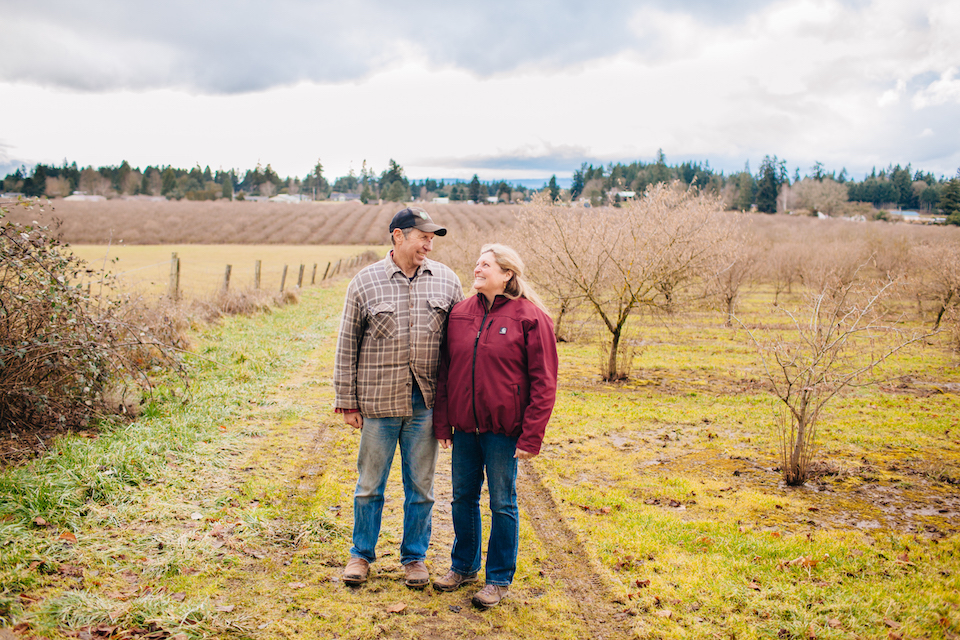Farm to Table: Weathering the Storm
written by Sophia McDonald | photos by Eugene Pavlov
You don’t have to be a person of faith to sense divine intervention in Rich Birkemeier’s career as a hazelnut farmer and nurseryman.
The Canby resident’s first near-miss came during his family’s first harvest. Birkemeier’s father was new to farming—he’d spent most of his career as a bridge builder but dreamed of working a plot of land in retirement. “He wanted to live an easier life on a farm,” Birkemeier said with a trace of irony.
In 1962, the elder Birkemeier had just bought one of the first mechanical harvesters. He was eager to try it out, so he picked his crop earlier than his neighbors. “The day after we finished, the Columbus Day storm hit,” his son said. “The next morning two-thirds of those trees we’d just harvested were tipped over. We were one of the few that got our harvest done that year.”
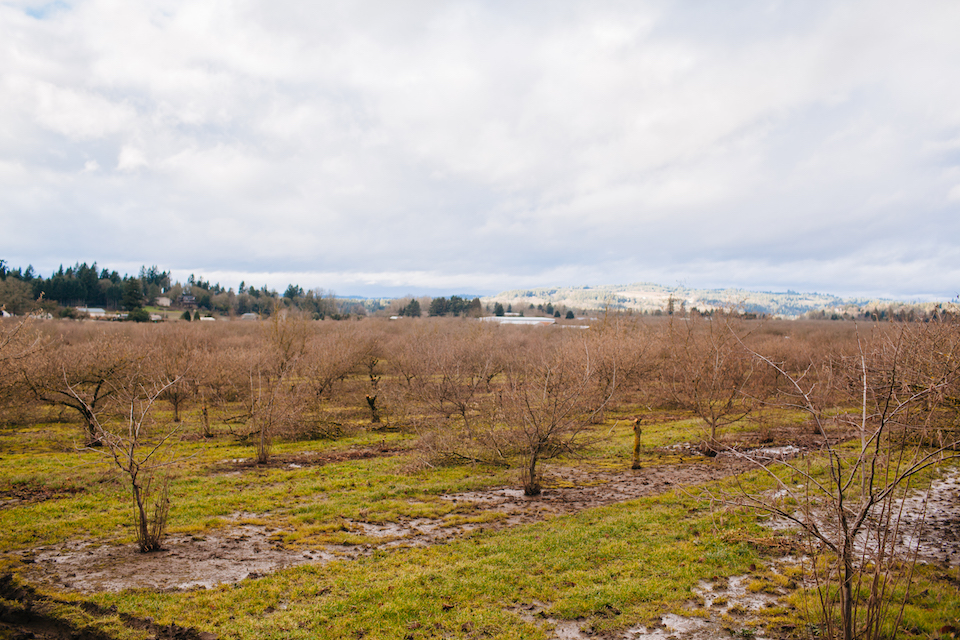
The next proverbial storm came twenty years later—and looked like it might have a bigger impact. A devastating fungus called Eastern Filbert Blight had migrated to Oregon and was killing off trees at an alarming rate. Farmers and researchers at Oregon State University were scrambling for solutions but weren’t having much luck.
“The blight just shut down planting,” Birkemeier said. “No one wanted to plant hazelnuts when there was such an ominous disease threatening the whole industry.” For a while it seemed like Oregon’s status as the nation’s leader in hazelnut production might come to an end.
The Birkemeiers were committed to keeping their hazelnut farm alive even in the face of adversity. They tried replacing their dead orchards with a newly developed tree known as “Lewis.” It had partial resistance, but not enough to fend off the fungus.
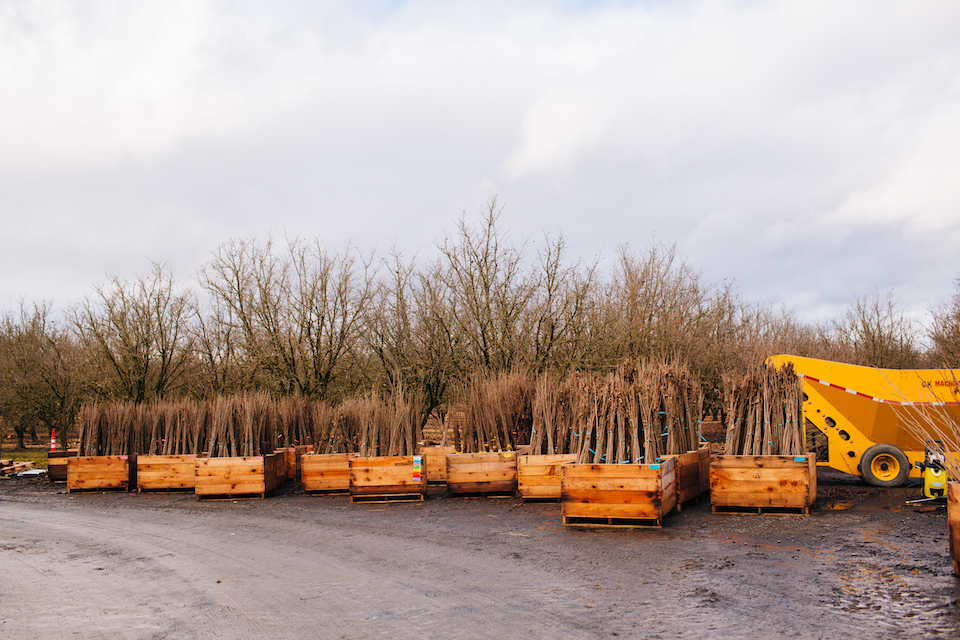
In 2000, the farm hit rock bottom. “I recognized that this wasn’t going to work unless we had something that had complete resistance,” Birkemeier said. He knew researchers at OSU were trialing new tree varieties, so he went to a friend and asked if he could start propagating one of them.
“His first response was not so good because it hadn’t been tested, so it was a huge risk in his view,” Birkemeier recalled. “But I explained to him, ‘Look, I’m not going to be here in a few years if I don’t do something.’” OSU agreed to let him try it, and he started raising trees in his own greenhouse.
The gamble paid off. The variety he ended up growing was released five years later as a cultivar called “Yamhill,” and appeared to be unaffected by Eastern Filbert Blight. The hazelnut industry could finally breathe a sigh of relief.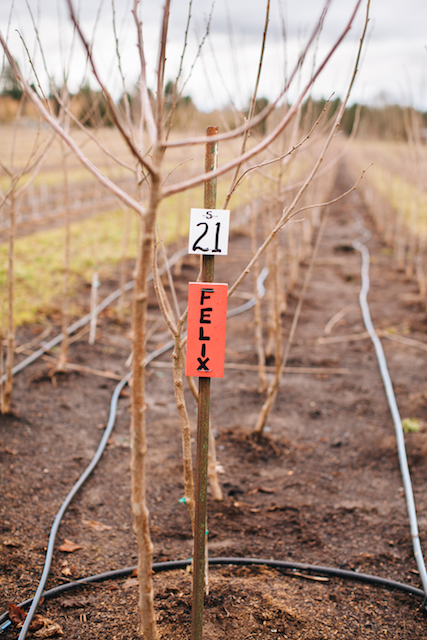
In the past ten years, hazelnuts have gone from a risky business to one people are investing in. “Everyone is recognizing what a great crop it is,” Birkemeier said. “It’s well-suited to the Willamette Valley. We’re riding the wave in terms of the health food market because hazelnuts, like all nuts, are very healthy.” Prices have stayed fairly stable and there’s strong international demand for them.
Birkemeier knows better than anyone that something else could affect the viability of growing hazelnuts. “There’s a lot of things totally out of our control that can affect what we do—but that applies to everyone growing everything,” he said.
He’s still grateful his father chose to grow hazelnuts. Overall, the business has been good to him and his family. And, if nothing else, “I get to work in the shade,” he quipped.
There are approximately 800 farms in Oregon currently growing hazelnuts, according to Grant Allen, administrator for the Nut Growers Society of Oregon, Washington and British Columbia. “Hazelnuts are only grown around the world at the forty-fifth parallel,” he said. “The Willamette Valley has very rich soil and, being trapped between the Coast and Cascade ranges, it also has just the right amount of water and perfect temperatures.” Ninety-nine percent of hazelnuts grown in the United States come from Oregon, though the state’s crop still pales in comparison to top global producers Turkey and Italy.
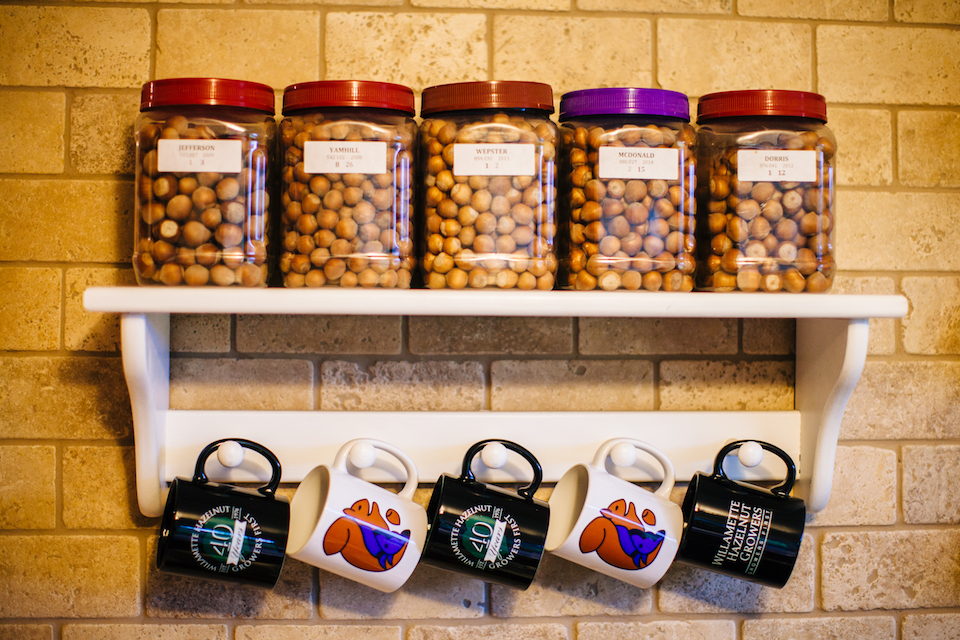
Hazelnuts are versatile enough to be used for any part of a meal. Kick off a party with spiced roasted hazelnuts from Produce Row Café in Portland. “The hazelnuts are a wonderful appetizer by themselves but can also be combined with cheese and meat platters,” general manager Marcus Chase said. “Baked brie with Oregon berry compote and spiced hazelnuts is a fantastic option.”
Hazelnuts are also excellent with a candy coating. Toss sweet, crunchy nuts with roasted winter squash and herbed mascarpone cheese in a recipe from Lily Tollefsen, owner of Radar Restaurant, a Portland bar and eatery that serves Scandinavian-inspired cuisine.


